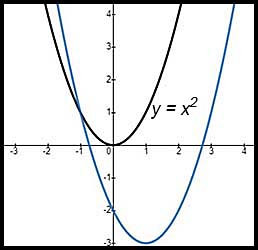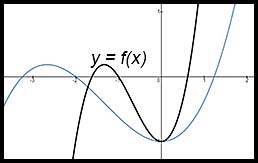Vertical Dilation Vs Horizontal Dilation
Dr. J'southward Maths.com
Where the techniques of Maths
are explained in simple terms.
Functions - Transformations.
Summary of shift and dilation transformations.
The post-obit is a summary of the strategies outlined in the video for transformations aiming at shifting and/or dilating curves.
| Vertical | Horizontal | |||
| Shifts | Replace y with y - V. | Supersede 10 with ten - H. | ||
| V is the constant by which the curve is moved vertically. | H is the abiding by which the curve is moved horizontally. | |||
| V > 0: moves bend up. | H > 0: moves bend to right. | |||
| V < 0: moves curve downward. | H < 0: moves curve to left. | |||
| Dilation | Replace y with | Supplant y with | ||
| V is the dilation factor from the x centrality. | H is the dilation factor from the y axis | |||
| V > one: curve expands up. | H > one: curve expands out. | |||
| 0 < Five < ane: curve contracts towards x axis. | 0 < H < 1: bend contracts towards y axis. | |||
| Five < 0: curve flips effectually x-axis. | H < 0: curve flips around y-axis. | |||
The following table provides examples of transformations together with descriptions.
The f(ten) is not the aforementioned across all examples do the basic shape is provided:
| Transformation | Equation | Graph |
| Horizontal shift: | y = x3 transformed to y = (10 + 2)3. The +two in the brackets moves the curve 2 units to the left. |  |
| Vertical shift: | y = x3 transformed to y = teniii + 1
|  |
| Both shifts: | y = x2 transformed to y = (x - ane)ii - three
|  |
| Dilation | y = f(ten) transformed to  . . The two inside the office shows a horizontal dilation - or stretch) by a factor of 2. The betoken (-i, 0) becomes (-ii, 0). |  |
| y = f(x) transformed to y = 2f(ten) is equivalent to y ÷ two = f(ten). Hence a vertical dilation (a stretch) by a factor of 2 - e.g. the y = -1 goes to y = -2. (no change to the 10 intercepts of course). |  | |
| Mixtures | y = f(ten) transformed to y = 1 - f(x):
|  |
| y = f(ten) is transformed into y = i - 2f(3x):
|  | |
|
Vertical Dilation Vs Horizontal Dilation,
Source: https://drjsmaths.com/Forms/Functions/Transformations/Summary%20of%20shift%20&%20dilate.html
Posted by: rochastemblitrand84.blogspot.com


0 Response to "Vertical Dilation Vs Horizontal Dilation"
Post a Comment